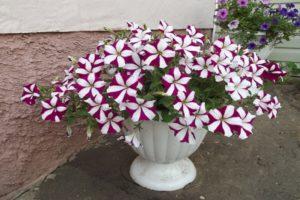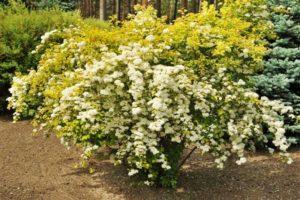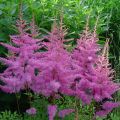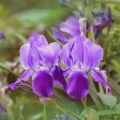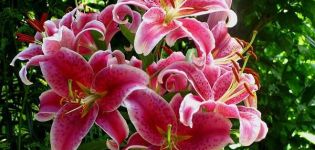Description and characteristics of astilba varieties Amethyst, planting and care
Astilba - decoration of shady areas of the site. She is loved by gardeners for its unpretentiousness, long flowering, openwork foliage. Astilba Arends Amethyst is a very popular variety among flower growers. This beautiful plant blooms with lilac inflorescences for a month. Information on planting and caring for plantings is below.
The history of breeding the variety Amethyst
German botanist Georg Arends and French botanist Emile Lemoine in the 20th century bred many varieties of astilbe of various heights, flowering periods and color of inflorescences. They were the founders of the classification of plant forms and varieties. After their death, the plant was forgotten for some time, but now it is experiencing a rebirth.
Breeding work is ongoing. Astilbe Arends is a common group of varieties that are very popular among gardeners for their beauty. In addition to Amethyst, flower growers are planted on the sites of Brautschleiger, Rose Pearl, Diamant, Fenel.
Benefits of using in landscaping
Astilba serves as a decoration for the garden area. It is used in mixborders, combining with lily, phlox, aquilegia. Openwork leaves of astilba will effectively stand out against the background of host, bergenia, evergreen shrubs. It can be planted in pots, which are then moved to various places in the local area.
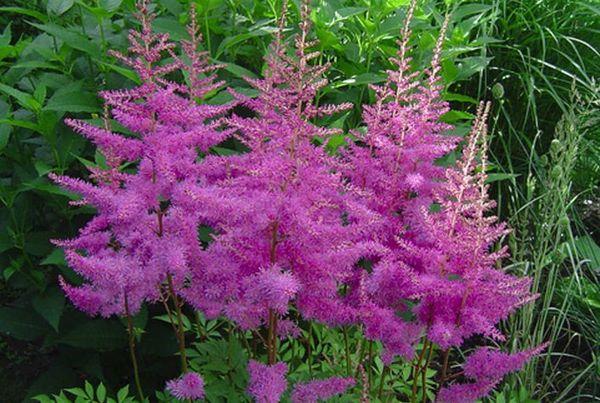
It will be beneficial to plant a plant next to bulbous crops: daffodils, tulips, muscari, snowdrops, crocuses, hyacinths. When they fade, there remains a clearing with ugly protruding, drying out trunks. Astilba in the process of development will cover the territory with its spectacular leaves and inflorescences.
Brief characteristics and description
Astilba Amethyst is a perennial herbaceous shrub, reaching a height of 80-100 centimeters. In width, the plant spreads out 50-80 centimeters. Leaves are green, lilac narrow inflorescence consists of numerous small flowers. Its length is about 30 centimeters, width is 7-10 centimeters.
Astilba blooms for 30 days, starting in late June. After flowering, seed pods are formed. The plant will thrive best in partial shade. Amethyst is a frost-resistant variety; no shelter for the winter is required for it.
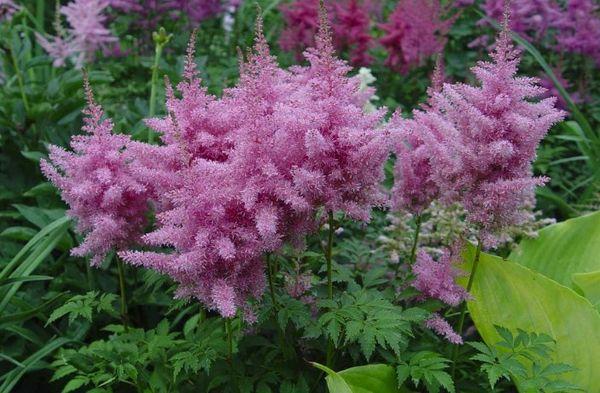
Necessary conditions for growth
The site for planting astilba should be chosen shaded, with a high occurrence of groundwater. The root system grows well in a humid environment. The plant does not make any special claims to the composition of the soil, but loose soil with normal acidity is preferable. In one place, the bush can develop for about 10 years.
Advice! Although the bush can bloom in the first year after planting, it is better not to allow this. First, the plant must get stronger, grow a rhizome in order to winter well.
How to plant a culture in the garden
For the development of the bushes, you need to choose the right seedling, choose a planting site, plant a rhizome in the required period.
Choosing a healthy and strong seedling
You need to acquire a rhizome with short shoots as early as possible. If the weather is still cool, you can keep it in the refrigerator or other cold place. Delaying the purchase, the gardener runs the risk of acquiring a plant with elongated, twisted shoots. Also, when choosing a rhizome, you need to pay attention so that it is free of rotten and dried fragments.
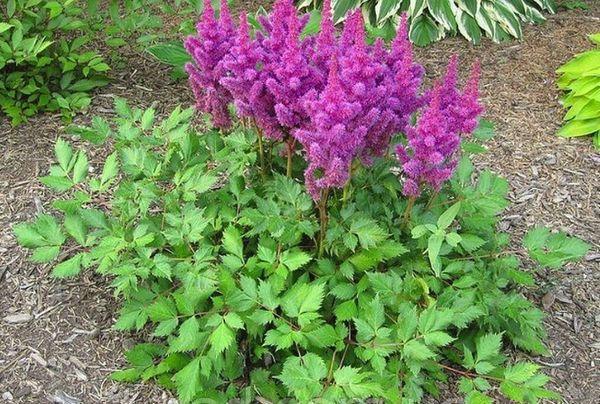
Preparing the place
Before planting astilba Amethyst, the site is freed from debris, dug up, rotted manure is introduced into it. After that the territory is huge, holes are made at a distance of at least 30 centimeters from one another. Their size should be such that the rhizomes have enough room for growth and development.
Dates and technology of disembarkation
Astilba Amethyst is planted after warming up the earth. This usually happens in May. Planting a plant is done as follows:
- holes are dug out, the earth in them is mixed with ash, mineral fertilizers, as well as with a hydrogel, which helps to retain moisture in the soil;
- pits are watered with water, rhizomes are planted in them;
- plantings are covered with earth.
The root system of astilba is shallow, so the plant is not planted deep in the ground. To preserve moisture in the soil, plantings are mulched with peat or tree bark.
Plant care
Care consists in frequent watering, especially in dry summers, gentle loosening, mulching of the soil. In addition, for the juiciness of the colors, you need to feed the plant. Bushes are also examined to identify pests and diseases. If necessary, a transplant of overgrown plantings is done.
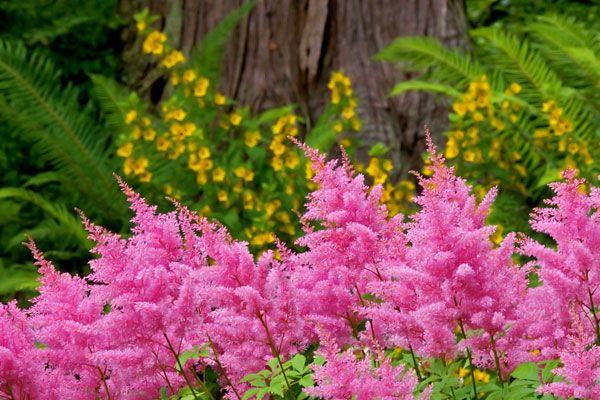
Watering
Astilba Amethyst is a moisture-loving planting. Therefore, it should be watered often, in dry summer, twice a day: in the morning and in the evening. If there is not enough moisture in the soil, the plant reduces the decorative qualities: the inflorescences become smaller, they lose the juiciness of the color.
Top dressing
For young plants, there is enough feeding made during planting. Adult bushes are fertilized with nitrogen immediately after the shoots appear. It helps plants adapt faster after winter, and also promotes the growth of openwork foliage.
The next top dressing is done directly during budding with a phosphorus-potassium mixture. It will contribute to the abundant and long-lasting flowering of Astilba Amethyst. In order for the bushes to endure the winter well, in the fall they make another fertilizing with fertilizer with a predominance of potassium.
Important! For the winter, bushes, especially those planted in autumn, need to be mulched with peat, tree bark, dry foliage, and also covered with spruce branches.
Bush formation
Astilbe does not require pruning: it forms the crown on its own. For the aesthetic appearance of the plant, it is necessary to remove faded peduncles, dried leaves for any reason. You do not need to leave the flower arrow: the resulting seeds weaken the development of the plant.
Preventive treatments for diseases and insects
Astilba Amethyst is rarely attacked by pests and diseases, but sometimes it does happen. A plant, for example, can take a fancy to a penny.A sign of its appearance is the presence of abundant foam on the stems.
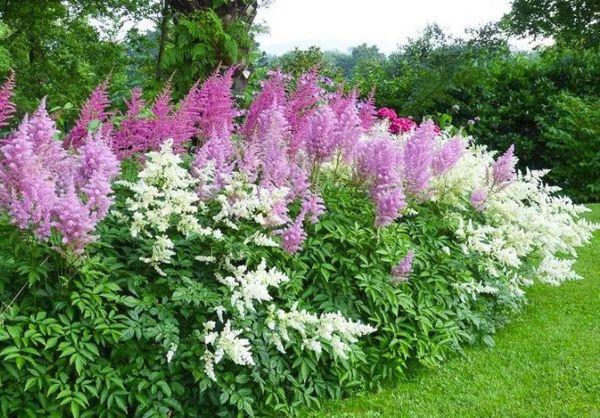
You can get rid of the penny by treating the plant with an insecticide. To prevent the appearance of pests, it is necessary not to thicken the planting, as well as remove weeds and plant debris from the site. For the prevention of diseases, the bushes are sprayed with a fungicide in the spring.
Transfer to a new location
If the place on the site does not fit astilbe, it needs to be transplanted. The procedure is performed in spring or autumn as follows:
- The landing pit is pulled out in advance. In size, it should be 2 times the root system of the bush.
- Astilba is dug up and immediately transplanted to a new location.
- The roots are gently straightened, covered with soil.
- The bushes are watered and mulched with peat to retain moisture.
Astilba should be transplanted as early as possible. This makes the plant easier to adapt to a new place.
Reproduction methods
In their plots, gardeners most often propagate astilba by dividing the bush. To do this, an adult bush is dug up in spring or autumn, divided into parts, each of which must have a rhizome and shoots. Delenki are planted in a permanent place, watered, mulched.
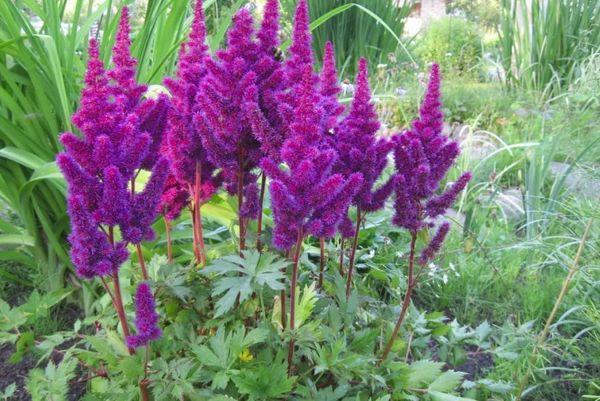
Another way is reproduction in spring by renewal buds. In this case, a bud with a rhizome is planted in a substrate consisting of peat and sand, watered, and covered with a film. Bushes are planted in open ground in the fall. Reproduction of astilba by seeds is long-term, and is usually not used by gardeners. It is used by breeders to develop new varieties.
The main problems that arise when growing astilba
Most often, when growing a plantation, the following problems arise:
- The bushes do not develop well. This can happen when the astilba is planted in a place that is too sunlit or, conversely, in the shade. The best place for her is partial shade.
- Astilba does not bloom. This can happen for several reasons: the bush is too old and needs a transplant; the plant is too young, it blooms the next year after planting; excess nitrogen fertilizer.
Note! An excess of nitrogen can lead to the fact that the bush does not bloom, but only grows abundantly foliage.
Planting astilba Amethyst will help the gardener to decorate the plot in an unusual and effective way. It is easy to care for, rarely exposed to the invasion of pests and diseases. In the landscape, astilbe is planted next to the same shade-loving plantations. It is especially indispensable in plantings with bulbous plants, after the flowering of which, it closes an unsightly meadow with its delicate foliage.
